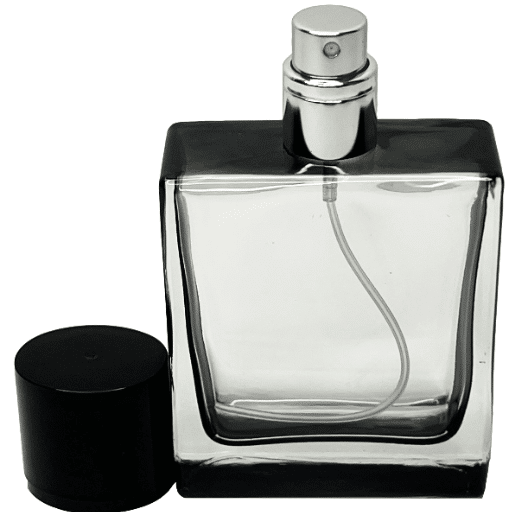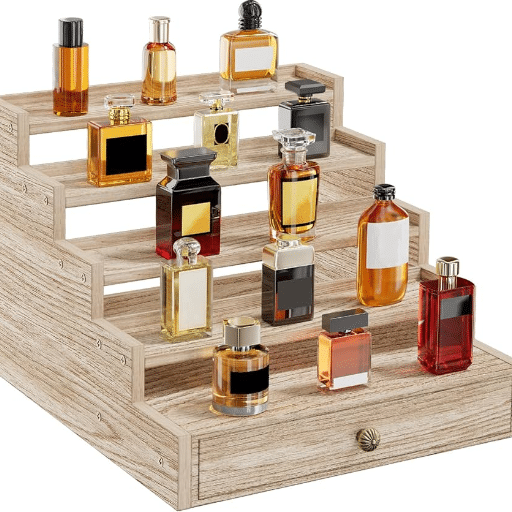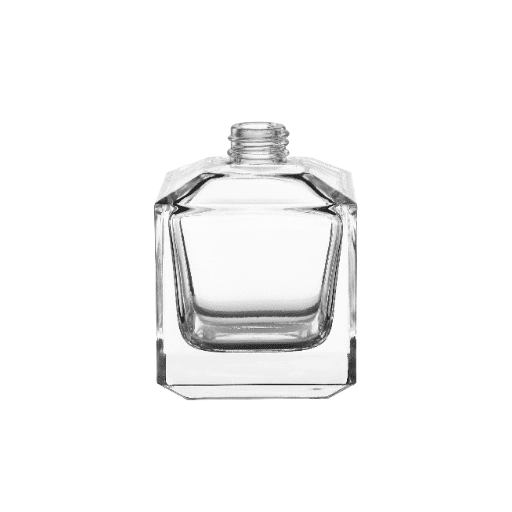Creating a signature scent is an art form that blends creativity, individuality, and precision. Central to this experience is the role of custom glass perfume bottles, which do more than just store a fragrance—they serve as an extension of the scent itself, embodying the personality and story behind it. This guide explores the intricate process of crafting a personalized perfume, from understanding scent profiles and fragrance layering to designing a bespoke glass bottle that perfectly complements the chosen aroma. Whether you are a fragrance enthusiast or looking to elevate your brand’s identity, this article provides a comprehensive overview of how custom glass perfume bottles and signature scents converge to create a unique sensory experience.
What Are Custom Perfume Bottles?
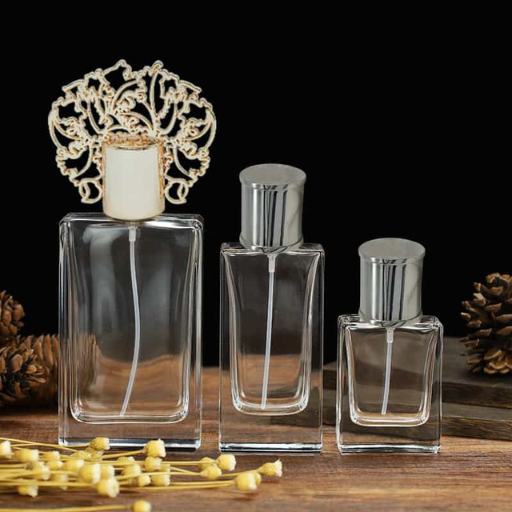
Custom perfume bottles are highly developed molds made specifically to store and display a fragrance. Their shape, size, material, and decoration can all be customized to capture what the fragrance represents, alongside the brand or individual identity. Custom perfume bottles go beyond preserving scents; they enhance its character through striking design aspects like engraving, embossing, or bold colors, thus creating an unforgettable tactile and visual experience.
Understanding the Appeal of Custom Bottles
The appeal of custom bottles lies in their ability to merge functionality with distinct aesthetic value. From a practical perspective, these bottles ensure optimum preservation of their contents through tailored materials and precise engineering, preventing external contamination and degradation. At the same time, their customizable nature allows brands and individuals to craft unique designs that reinforce identity and storytelling. Custom bottles are often viewed as powerful marketing tools, offering differentiation in competitive markets by creating a lasting impression through design elements such as distinctive shapes, ornate features, and personalized branding. Furthermore, advancements in sustainable materials ensure that customization can align with eco-conscious practices, addressing consumer demand for environmentally responsible solutions while maintaining visual allure.
How to Design Your Own Perfume Bottle
Key Considerations in Designing Your Own Perfume Bottle
- Define the Bottle’s Purpose and Target Audience
Begin by determining the intended market for the perfume and the image you wish to project. For a luxury fragrance, opt for a sophisticated and elegant design. For a youthful or casual audience, consider playful shapes or vibrant colors.
- Select the Material
Choose materials that balance aesthetic appeal, functionality, and sustainability. Common options include glass, which provides a premium look and is recyclable, or high-quality plastic for durability and portability. Ensure the material is compatible with liquid fragrance stability.
- Focus on Shape and Capacity
The shape of the bottle should align with the brand identity while ensuring ergonomic handling. Typical capacities range between 30 ml (1 oz) for travel-size and 100 ml (3.4 oz) for standard use. Verify the volume meets both commercial and aesthetic objectives.
- Closure and Spray Mechanism
Choose a reliable spray pump mechanism for consistent dispensing. Ensure the sprayer nozzle delivers an appropriate mist, typically between 0.08 ml and 0.15 ml per spray. Pair this with a well-fitting cap or innovative closure for secure sealing.
- Labeling and Branding
Incorporate branding elements such as logos, typography, or custom prints that enhance the bottle’s distinctiveness. Use durable, waterproof materials for labels to withstand wear over time.
- Sustainability Standards
To meet eco-conscious consumer expectations, consider incorporating recycled glass or bioplastics, minimizing material waste during production, and designing refillable bottles where feasible.
- Safety and Compliance
Ensure the design complies with industry standards, including ASTM and ISO specifications, to guarantee safety and functionality during transport, storage, and daily use.
By addressing these elements with precision and a clear understanding of your goals, you can create a perfume bottle design that is both functional and aesthetically aligned with your brand vision.
The Process Behind Customizing Perfume Glass
When customizing perfume glass, I focus on balancing aesthetic appeal, functional integrity, and brand consistency. The process begins with defining the design requirements, such as the shape, size, and decorative elements. Typically, glass thickness plays a crucial role in ensuring durability without compromising elegance, and I aim for a standard thickness range of 2.5 mm to 4 mm.
Next, I select the type of glass based on clarity, weight, and sustainable practices—flint glass is often preferred for its high transparency and refractive qualities. For decorative finishes, options like frosting, screen printing, engraving, or metallic accents are applied, with technical precision ensuring adherence to tolerances of ±0.5 mm for engravings and perfect alignment for multi-pass printing.
Finally, compliance with industry standards, such as ASTM C1036 for glass quality and ISO 15378 for primary packaging materials, is verified to ensure optimal safety, hygiene, and compatibility with the perfume contents. By adhering to these parameters, customization achieves both technical perfection and visual sophistication.
How to Choose the Right Custom Perfume Bottle?
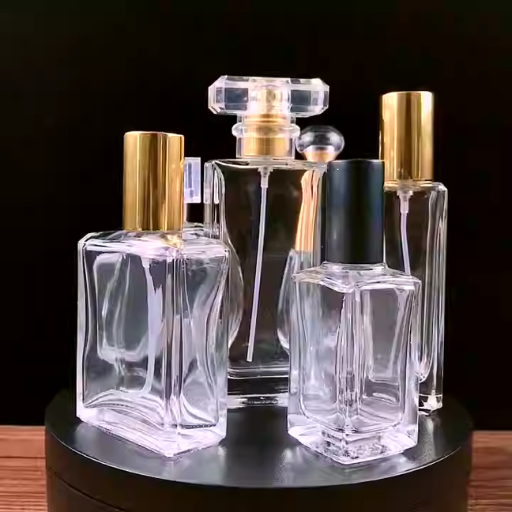
Selecting the right custom perfume bottle involves several critical considerations to align functionality, aesthetics, and brand identity. First, evaluate the material of the bottle, such as glass or metal, based on durability, compatibility with the fragrance, and visual appeal. Second, assess the design and capacity to ensure it meets the target audience’s preferences and the intended market segment. Third, verify the compatibility of the bottle with dispensing components like pumps, caps, and seals to maintain product integrity. Lastly, confirm compliance with regulatory standards and technical specifications to guarantee safety and quality.
Factors to Consider: Material and Design
When considering material and design, I prioritize durability and compatibility with the fragrance to prevent chemical reactions or degradation. I ensure the materials—glass, plastic, or metal—align with visual goals and market positioning while meeting functional requirements. Design-wise, I focus on creating an ergonomic, aesthetically pleasing form that resonates with the target audience, balancing innovation with practicality. Capacity is tailored to consumer demand, and I confirm that the chosen bottle integrates seamlessly with pumps, caps, and seals, maintaining both usability and product integrity. Compliance with regulatory and safety standards is non-negotiable, as it ensures the final product adheres to industry benchmarks for quality and reliability.
Exploring Different Glass Perfume Bottle Shapes
Popular Glass Perfume Bottle Shapes and Their Specifications
The design of glass perfume bottles serves both aesthetic and functional purposes, with specific shapes catering to diverse branding needs and consumer preferences. Below are the primary categories of bottle shapes commonly used in the fragrance industry, synthesized from leading resources:
- Square and Rectangular Bottles
-
-
- Description: Characterized by clean lines and uniform proportions, these shapes exude sophistication and minimalism. Often chosen for high-end or unisex fragrances, square and rectangular designs emphasize stability and space efficiency.
- Technical Parameters:
-
- Volume capacities range from 5ml to 150ml.
- Wall thickness typically between 2mm and 4mm to ensure durability.
- Standardized neck sizes (e.g., 15mm, 18mm) for compatibility with atomizers.
-
- Cylindrical Bottles
-
-
- Description: Cylindrical bottles are synonymous with elegance and uniformity, offering a smooth, rounded profile. They are versatile and can be enhanced with engraving, frosting, or metal-plated finishes.
- Technical Parameters:
-
- Volume capacities range from 10ml to 200ml.
- Uniform glass thickness ensures resistance to thermal stress.
- Compatible with snap-on or threaded neck finishes (commonly 15mm).
-
- Oval and Elliptical Bottles
-
-
- Description: Providing a softer, more organic look, these shapes convey femininity and exclusivity. The curved profiles are often designed for ergonomic handling.
- Technical Parameters:
-
- Volume capacities range from 15ml to 120ml.
- Complex molding techniques ensure smooth contour integrity.
- Reinforced bottom thickness (3mm to 5mm) for enhanced stability.
-
- Irregular or Custom Shapes
-
-
- Description: Creative and asymmetrical designs showcase brand distinctiveness and artistic expression. Custom shapes are often handcrafted or laser-cut to meet unique branding requirements.
- Technical Parameters:
-
- Volume capacities tailored to request, generally between 5ml and 100ml.
- Advanced precision molding to maintain structural integrity.
- Custom neck systems to accommodate unique closures.
-
Each bottle design must account for critical technical considerations such as weight distribution, glass strength, and sealing efficiency to ensure compliance with packaging performance standards. By selecting an appropriate shape and adhering to these parameters, brands can align aesthetic goals with functional reliability in their perfume packaging solutions.
Choosing the Idealities of a Cap for Perfume Bottles
Lids of perfume bottles must be chosen with care as they ought to be blend of design, practicality, and balance. Below are some detailed tips to make the selection procedure simpler.
- Material and Compatibility
-
-
- The cap material should be compatible with the bottle’s neck to ensure a proper fit and effective sealing. Common materials include plastic, metal, and wood, depending on design requirements.
- Ensure the material is resistant to perfume components, including alcohol, to prevent degradation or chemical interactions.
-
- Sealing and Fit
-
-
- The cap must create an airtight seal to prevent evaporation or leakage. Verify compatibility with standard neck finishes (e.g., GPI or DIN specifications).
- Precision testing, such as torque measurement during closure, ensures optimal sealing without over or under-tightening.
-
- Design and Weight Considerations
-
-
- The design should align with the overall aesthetic of the bottle and brand image while maintaining proportional weight distribution for stability.
- Caps with weights incorporated (e.g., metal inserts) should consider total center of gravity to avoid tipping. Standard weight recommendations range from 1.5 to 4 oz depending on bottle size.
-
- Production and Assembly Requirements
-
-
- Evaluate ease of assembly with automatic or manual capping processes based on production volume.
- Threaded or snap-on closures should meet tolerances specified for uniform performance during mass production.
-
- Sustainability and Durability
-
-
- Consider eco-friendly options, such as recycled materials or biodegradable alternatives.
- Durability testing under different storage conditions (heat, humidity) ensures long-term performance.
-
By adhering to these technical parameters and considering design priorities specific to your brand, you can achieve a cap solution that enhances both functionality and consumer appeal.
What Are the Benefits of Customizing Your Perfume Bottle?

Benefits of Customizing Your Perfume Bottle
- Brand Differentiation
Customizing your perfume bottle allows your brand to stand out in a competitive market. Unique designs and personalized details create a strong visual identity that resonates with consumers.
- Consumer Engagement
A bespoke bottle enhances consumer experience by aligning the packaging with the fragrance’s personality, fostering an emotional connection with the product.
- Enhanced Product Value
Tailored designs communicate luxury and exclusivity, justifying premium pricing and elevating the perceived value of the perfume.
- Functionality and Practicality
Customization enables the integration of features like ergonomic shapes or innovative dispensing mechanisms, improving usability and customer satisfaction.
- Sustainability Messaging
Incorporating sustainable materials and eco-conscious designs as part of customization supports environmentally conscious branding and attracts eco-aware consumers.
Enhancing Brand Image with Personalized Perfume Bottles
Personalized perfume bottles significantly enhance brand image by fostering a deeper emotional connection with customers. Offering customization options demonstrates a commitment to individuality, allowing customers to feel valued and unique. Additionally, by integrating sustainable materials and innovative designs, we not only reflect modern eco-conscious values but also position our brand as forward-thinking and socially responsible. This strategic approach strengthens brand loyalty while appealing to a broader, value-driven audience.
Creating a Unique Fragrance Experience
Crafting a unique fragrance experience requires a deep understanding of customer preferences, market trends, and the art of perfumery. To achieve this, brands can use advanced personalization tools such as scent quizzes or consultations to identify individual scent profiles. Incorporating sustainably sourced, high-quality ingredients ensures both ethical alignment and superior olfactory experiences. Furthermore, offering customizable packaging and narrative-driven storytelling around each fragrance enhances emotional resonance with customers. The integration of technology, such as interactive apps or augmented reality to visualize scent journeys, can further elevate the user experience. Ultimately, combining innovation, sustainability, and a customer-centric approach ensures a compelling and unforgettable fragrance experience.
Using Customization for Promotional Purposes
Customization plays a pivotal role in marketing by enhancing customer engagement, fostering brand loyalty, and creating distinctive value propositions. According to top sources, personalized products or services allow customers to feel more connected to the brand, ultimately driving repeat purchases and positive reviews. Effective strategies include leveraging data analytics to understand customer preferences, enabling product configurators online or in-store, and integrating user-generated content to showcase customized offerings. Additionally, targeted promotions based on purchase history or preferences can significantly increase conversion rates. By aligning customization with storytelling and digital tools, brands can amplify their promotional efforts while maintaining relevance and authenticity in competitive markets.
How to Personalize Your Perfume Packaging?
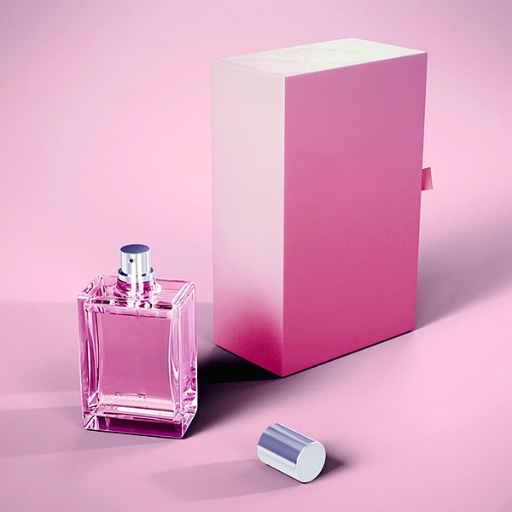
Personalizing perfume packaging can be achieved through a combination of innovative design techniques and customer-centric approaches. Start by incorporating customizable elements such as engraving options for names or messages on bottles and packaging. Utilize color schemes and patterns that resonate with specific customer demographics or align with seasonal trends. Advanced technologies like augmented reality (AR) can add interactive elements to the packaging, enhancing the user experience. Additionally, integrating eco-friendly materials for sustainable packaging customization appeals to environmentally conscious consumers. By leveraging these strategies, brands can create packaging that not only stands out but also forges a deeper connection with their target audience.
Engraving Techniques for Custom Perfumes
Engraving has become a prominent technique for personalizing perfume bottles, adding an element of exclusivity and sophistication. There are several methods used in the industry, each with its own technical considerations and advantages:
- Laser Engraving
-
-
- Process: Laser engraving uses a highly focused laser beam to etch designs directly onto the surface of the perfume bottle.
- Applications: Ideal for intricate patterns, logos, or text due to its precision.
- Technical Parameters:
-
- Laser Power Output: Typically ranges between 20W and 50W for glass and metal surfaces.
- Wavelengths: For glass, a CO2 laser with a wavelength of 10.6 µm is recommended. For metals, fiber lasers with wavelengths around 1.06 µm are effective.
- Engraving Depth: Most applications require depths between 0.02 mm and 0.1 mm.
- Advantages: Offers high precision, durability of design, and suitable for small-scale, customized production.
-
- Rotary Engraving
-
-
- Process: Uses a rotating tool or diamond-tipped cutter to engrave patterns onto cylindrical surfaces, such as perfume bottles.
- Applications: Often used for premium glass bottles or metallic surfaces.
- Technical Parameters:
-
- Spindle Speed: 20,000 to 30,000 RPM for optimal quality on glass without causing cracks.
- Cutting Depth: 0.05 mm to 0.2 mm, depending on the material’s thickness.
- Feed Rate: Moderately slow to ensure precision, at around 20 mm/min.
- Advantages: Provides flexibility for engraving curved or unconventional shapes, with consistent results.
-
- Sandblasting Engraving
-
-
- Process: Sand or abrasive material is propelled at high speed onto a masked surface, etching the exposed areas.
- Applications: Frequently chosen for frosted or opaque designs, giving a tactile finish.
- Technical Parameters:
-
- Abrasive Type: Aluminum oxide or silicon carbide particles (80-120 grit).
- Air Pressure: Ranges from 60 to 120 PSI for uniform results.
- Masking Material Thickness: 0.3 mm to prevent unwanted abrasion.
- Advantages: Capable of achieving a frosted effect, cost-effective for large volumes.
-
Each of these engraving techniques can be enhanced by integrating advanced tools like computer-aided design (CAD) software for pre-visualization and precision. The choice of technique depends on factors such as material properties, the desired aesthetic, and production scale. Employing the appropriate method ensures high-quality customization, strengthening brand identity and consumer satisfaction.
Choosing the Right Box for Your Custom Fragrance
Selecting the ideal packaging for your custom fragrance involves a balance of aesthetics, functionality, and sustainability. Firstly, consider the material of the box—options like rigid cardboard, kraft paper, or eco-friendly alternatives are commonly used for their durability and appeal. The structural design should protect the fragrance bottle from damage during shipping and handling, incorporating elements such as inner padding or die-cut inserts. Additionally, customization plays a key role; visually appealing designs aligned with your brand identity, including foil stamping, embossing, or UV printing, can elevate the perceived value of your product.
Environmental considerations are increasingly important, with many consumers favoring recyclable or biodegradable packaging. Lastly, assess the practicality of scalable manufacturing costs, especially for retail or subscription-based models, to ensure both economic viability and consistent quality. By addressing these factors, you can create packaging that not only enhances the consumer experience but also strengthens your product’s market presence.
Innovative Packaging Solutions for High-Quality Perfumes
Key Considerations for Innovative Perfume Packaging
To address the mentioned factors effectively, here is a concise breakdown of corresponding technical parameters and solutions:
- Material Selection
-
-
- Glass Type: Opt for Type I borosilicate glass for premium durability and chemical resistance. This ensures no chemical interaction between the glass and the perfume, preserving the fragrance quality.
- Outer Packaging: Use FSC-certified cardboard or biodegradable materials for sustainable solutions. Test for compression strength (e.g., Edge Crush Test values of ≥32 ECT for boxes).
-
- Aesthetic Design
-
-
- Printing and Decoration: Employ UV silk-screen printing or hot foil stamping for high-quality finishes. Ensure pantone-matched color consistency with a tolerance of ±2%.
- Form Factor: Unique bottle shapes and ergonomic designs enhance consumer perception while allowing ease of use. Maintain a weight threshold below 120 grams for ergonomic handling.
-
- Functionality (Ease of Use)
-
-
- Utilize spray pumps with an atomizer output between 0.08 and 0.12 mL/spray for fine mist consistency and user comfort. Pumps should be tested for leak-proof reliability under pressures up to 15 psi during transit scenarios.
-
- Sustainability
-
-
- Recyclable Components: Integrate mono-material caps or detachable components to facilitate recycling. For instance, use 100% recyclable polyethylene terephthalate (PET) or polypropylene (PP).
-
- Scalable Manufacturing
-
-
- Identify manufacturing partnerships that support production volumes ranging from small-scale runs (10,000 units) to mass production (1M+ units/year). Conduct cost analysis to maintain per-unit costs below $2.50 for competitive pricing in high-end markets.
-
By implementing these parameters, brands can ensure a balance of functionality, sustainability, and luxury appeal, positioning their perfumes as leaders in both quality and innovation.
What Are the Latest Trends in Custom Perfume Bottles?
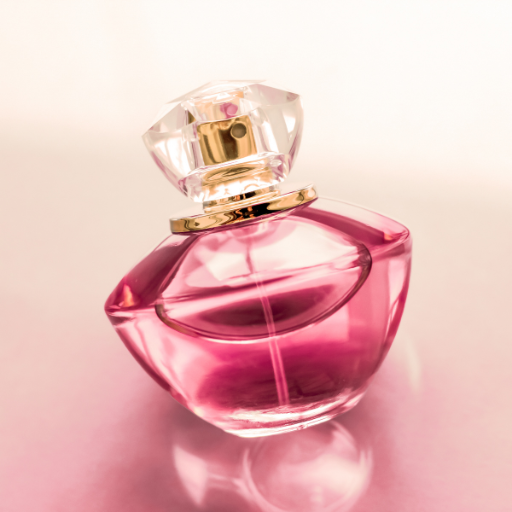
The Latest Trends in Custom Perfume Bottles
The customization of perfume bottles is increasingly influenced by sustainability, personalization, and technological integration. Sustainable designs now dominate the market, with brands opting for recyclable materials like glass and innovative refillable systems to reduce waste. Personalization is another key trend, offering consumers options for engraving, custom colors, or unique shapes to reflect individual tastes. Additionally, smart packaging technologies, such as NFC-enabled bottles, are being adopted to enhance user experience, providing features like authentication, refill reminders, and product information at the tap of a smartphone. These trends collectively cater to both environmental responsibility and the demand for exclusive, high-end solutions.
Exploring Eco-Friendly Packaging Options
From my research, eco-friendly packaging is primarily focused on minimizing environmental impact through the use of sustainable materials and innovative design. Options like biodegradable plastics, compostable materials, and recyclable alternatives are increasingly replacing traditional packaging. Companies are also exploring lightweight designs to reduce transportation emissions and energy consumption. Additionally, plant-based solutions, such as bamboo or cornstarch packaging, are gaining momentum for their renewable properties. It’s clear that adopting eco-friendly packaging not only benefits the environment but also aligns with the growing consumer demand for sustainable practices.
The Rise of Refillable and Sustainable Bottles
Refillable and sustainable bottles are becoming pivotal in reducing plastic waste and transitioning to a circular economy. These bottles, often made from durable materials such as glass, stainless steel, or recycled plastics, are designed for long-term reuse, significantly decreasing single-use packaging. Companies are increasingly implementing refill programs for beverages, personal care products, and household items, allowing consumers to conveniently replenish products without generating excess waste. Innovations, such as biodegradable bottles and advanced coatings, are also being developed to enhance durability while maintaining eco-friendliness. This movement supports both environmental goals and consumer preferences, as studies show that sustainability-conscious customers are more likely to choose brands that offer refillable and sustainable packaging solutions.
Luxury Perfume Bottles: Trends and Inspirations
Modern trends in luxury perfume bottles focus heavily on the interplay between aesthetics, functionality, and sustainability. High-end brands are leaning toward minimalist yet elegant designs, often incorporating recyclable materials such as glass and metals without compromising on the premium feel. Key inspirations include art deco motifs, nature-inspired shapes, and personalized engraving, catering to consumers seeking both exclusivity and environmental consciousness.
From a technical perspective, advancements in material science are shaping the future of luxury perfume packaging. The following parameters are often prioritized:
- Material Composition: High-quality flint glass (density ~2.5 g/cm³) is favored for its clarity and durability. Metallic accents often include anodized aluminum (corrosion-resistant) or gold plating for a luxurious touch.
- Bottle Coatings: Anti-scratch and UV-resistant coatings ensure both longevity and protection of the perfume’s integrity from light degradation.
- Sustainability Features: Refillable designs with removable pumps for ease of recycling, as well as biodegradable or FSC-certified materials for secondary packaging.
- Weight Standards: The average weight of a luxury perfume bottle ranges from 200-300 g, striking a balance between heft and usability.
- Bottle Sealing and Atomization: Micro-valve technology and precise atomizers (e.g., 0.15–0.20 mL/s spray output) are crucial for optimal perfume usage and a smooth application experience.
These trends reflect a fusion of artistry and engineering, ensuring that the bottle itself becomes as much a part of the consumer’s luxurious experience as the fragrance it contains.
Reference Sources
- Abely: Tailor-made Trendy & Luxury Perfume Bottles – A company specializing in custom perfume bottle projects and luxury packaging.
- Packamor: Wholesale Perfume Bottles & Packaging – Offers custom and wholesale perfume bottles with personalized designs.
- Crafting Your Signature Scent: Exploring the World of Perfumery – Discusses the art of creating a signature scent and its connection to individuality.
- Here’s How to Craft Your Signature Scent by Layering – Provides insights into layering fragrances to craft a unique scent.
- How to Create Your Own Signature Scent: A Beginner’s Guide – A guide to experimenting with essential oils and creating personalized perfume blends.
Frequently Asked Questions (FAQs)
Q: What are the benefits of using custom glass perfume bottles for my collection?
A: Custom glass perfume bottles offer a unique way to showcase your personal style and brand identity. They provide a tailored aesthetic that can complement your collection, making your perfumes stand out. Additionally, they can be designed to reflect the theme or mood of your range of perfume, enhancing the overall experience for clients.
Q: Can I order perfume bottles wholesale for my new perfume line?
A: Yes, you can order perfume bottles wholesale, which is beneficial for those starting a new perfume line. Purchasing in bulk often reduces costs and ensures you have a consistent supply for your products. Many suppliers offer a range of perfume glass bottles to choose from, fitting various design preferences and functionalities.
Q: How can I create my own perfume using customized perfume bottles?
A: To create your own perfume, start by developing a unique scent profile, often called a custom scent. Once you have your formula, choose customized perfume bottles that reflect your brand. Consider working with designers who can provide a list of decoration services for your bottles, ensuring they align with your artistic vision.
Q: What is the MOQ for ordering customized perfume bottles?
A: The MOQ, or minimum order quantity, for customized perfume bottles varies depending on the supplier. It can range from a few hundred to several thousand units. It’s important to inquire with your supplier about their specific MOQs to plan your purchase accordingly.
Q: How can I ensure my perfume bottles match the quality of my eau de parfum?
A: To ensure your bottles match the quality of your eau de parfum, select high-quality materials and finishes for your bottles. Collaborate with reputable suppliers who offer a range of customization options. This alignment enhances the perceived value of your product and provides a cohesive experience for your clients.
Q: Are there options for adding a pump to my cologne bottle designs?
A: Yes, most suppliers offer options for adding a pump to cologne bottles. This feature can enhance the usability and appeal of your product. Ensure that the pump mechanism is compatible with your bottle design to maintain functionality and aesthetics.
Q: How do I choose the right perfume bottle design for my cosmetic brand?
A: Choosing the right perfume bottle design involves considering your brand identity and target market. Look for designs that complement your range of products and resonate with your audience. Collaborating with experienced designers can help translate your brand’s vision into a tangible and attractive bottle design.
Q: Can I get samples of perfume bottles before placing a bulk order?
A: Yes, many suppliers offer sample bottles so you can evaluate their quality and design before committing to a bulk order. Requesting samples allows you to make informed decisions and ensures that the final product meets your expectations and standards.
Q: What considerations should I keep in mind when designing artwork for my perfume bottles?
A: When designing artwork for your perfume bottles, consider elements like color, typography, and imagery that align with your brand’s identity. Ensure the artwork is scalable and looks good on different bottle sizes. Collaborating with professional designers can help you achieve a polished and cohesive look for your perfume line.

